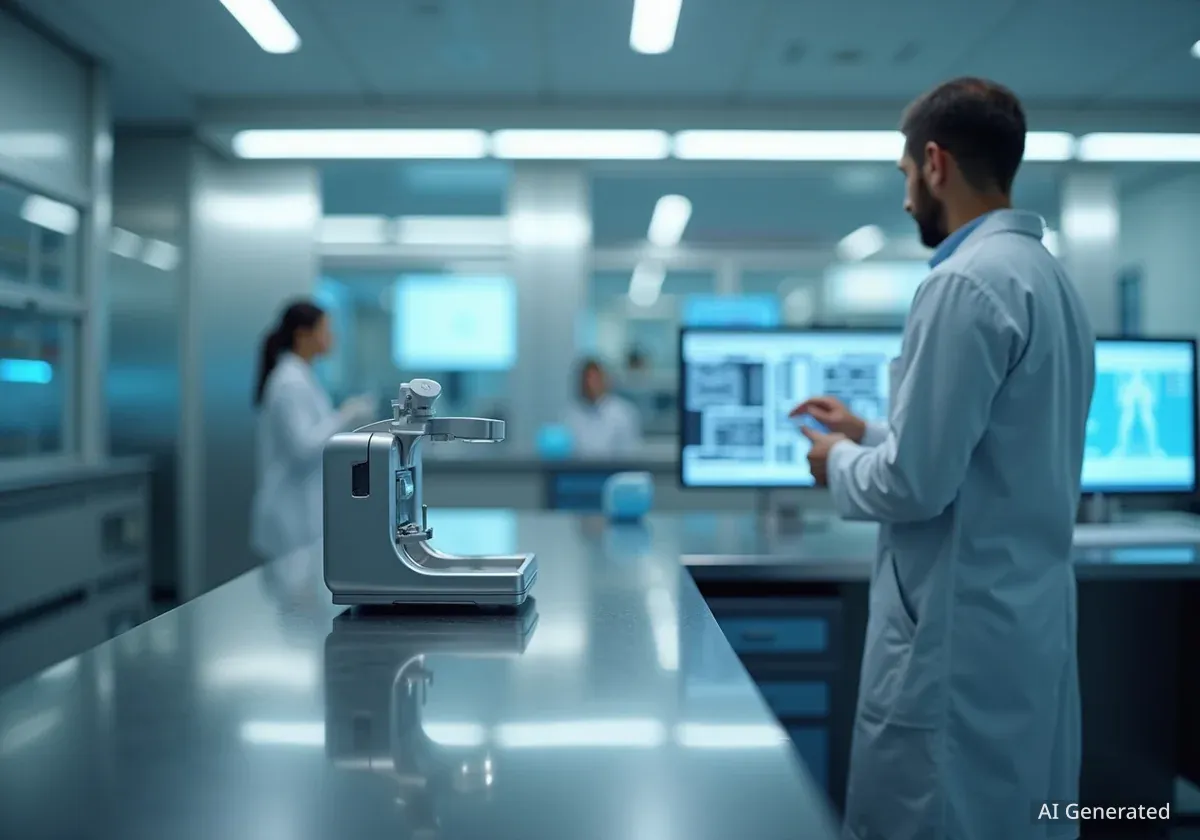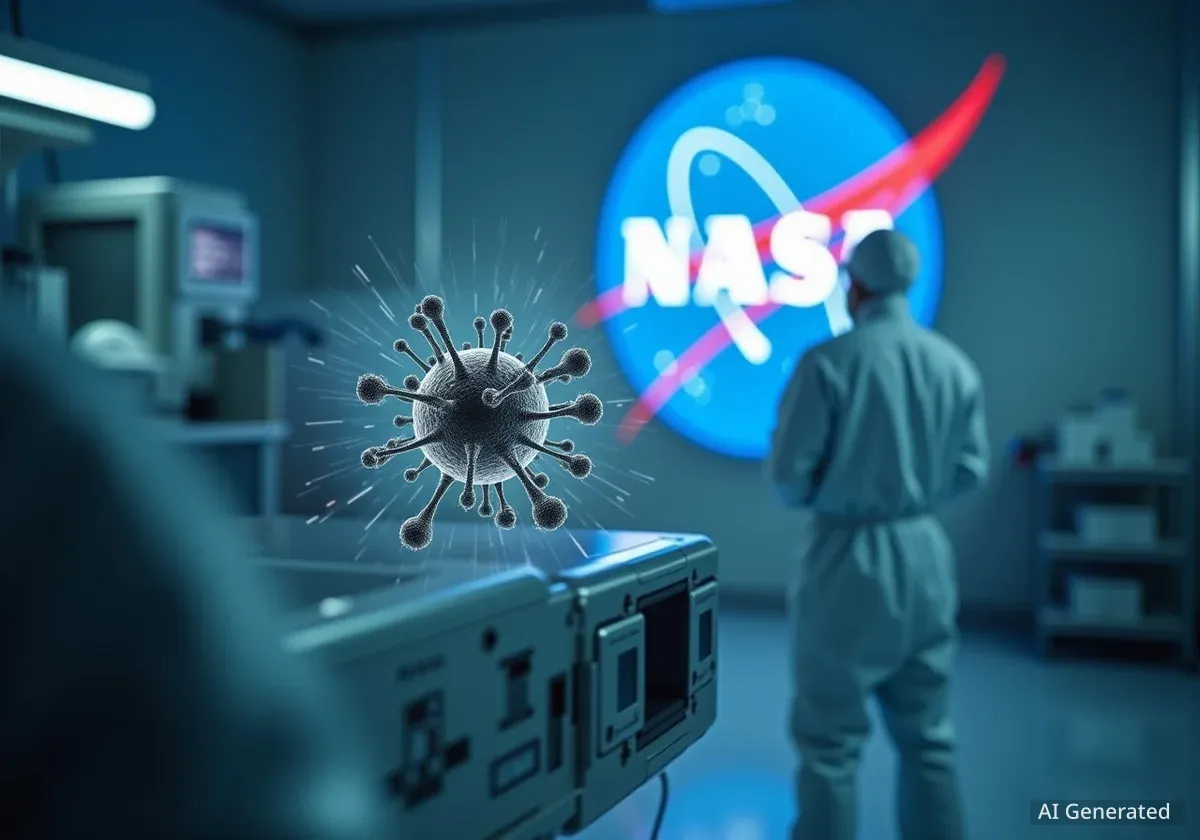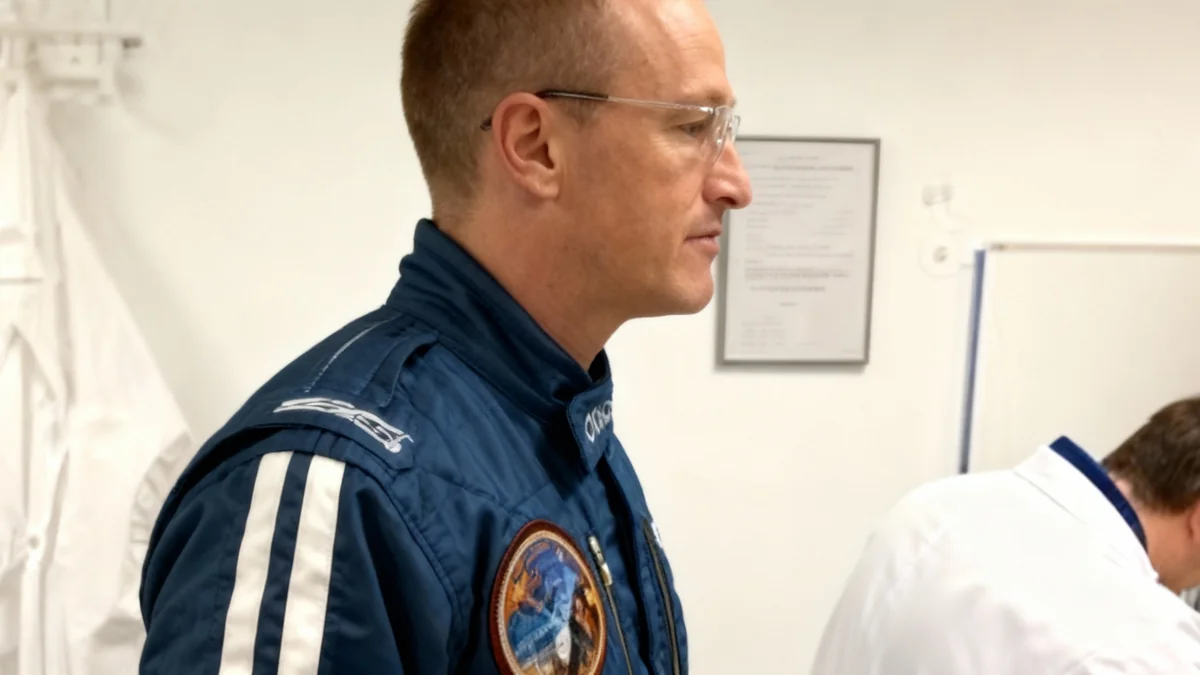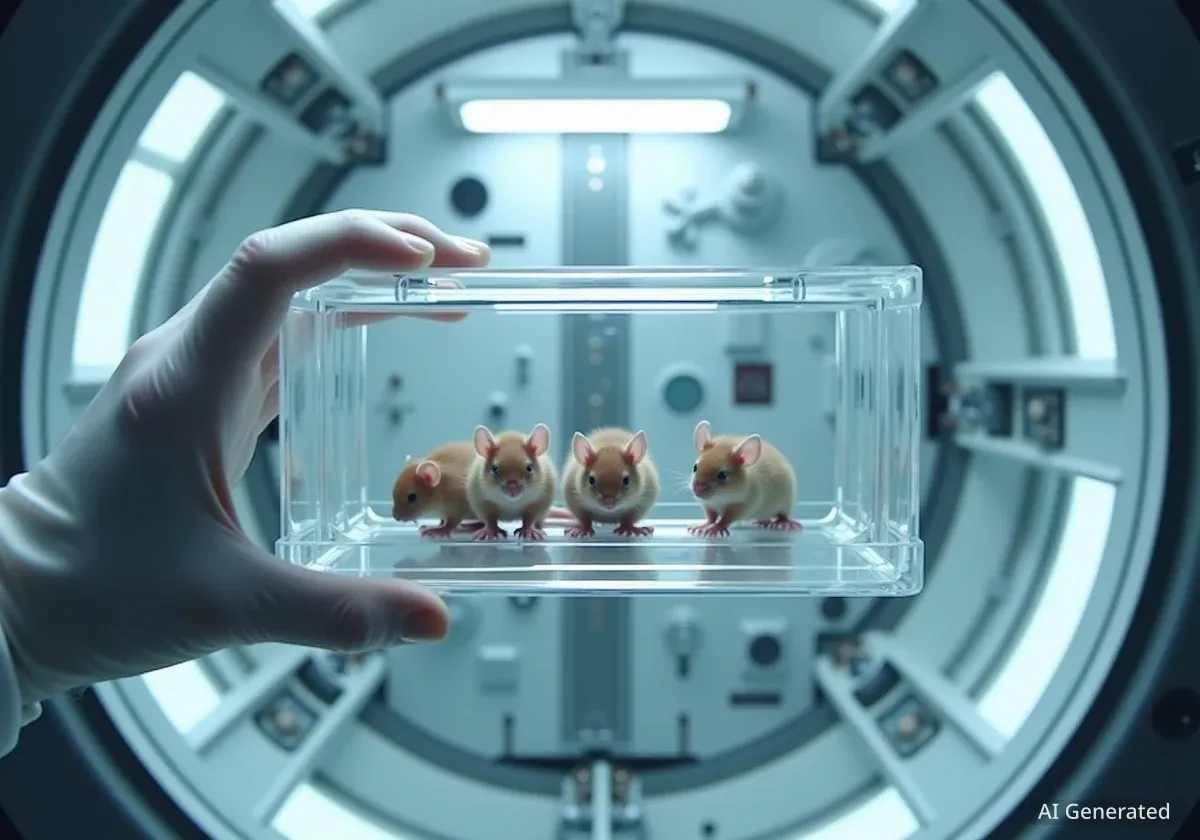NASA's Glenn Research Center in Cleveland is leading a project to select a portable X-ray device for future space missions, addressing a significant gap in astronaut medical care. In collaboration with two local Ohio institutions, the agency is conducting a multi-phase evaluation to find a system suitable for diagnosing injuries and inspecting equipment in space.
The International Space Station currently has an ultrasound machine but lacks X-ray capabilities, making it difficult to diagnose conditions like bone fractures. This initiative aims to equip astronauts with a crucial diagnostic tool for long-duration missions to the Moon, Mars, and beyond.
Key Takeaways
- NASA Glenn is evaluating portable X-ray devices to enhance medical support for astronauts on long missions.
- The project is a partnership with Cuyahoga Community College for training and University Hospitals for clinical testing.
- The selected device will serve both medical purposes, like diagnosing fractures, and non-medical uses, such as inspecting spacecraft parts.
- Three finalists from the U.S., Korea, and Japan are undergoing a rigorous evaluation process.
- The winning device is expected to be selected by 2025 and launched to the International Space Station around 2027 or 2028.
Addressing a Critical Need in Space Medicine
For decades, astronauts have relied on limited medical equipment in orbit. While the International Space Station (ISS) is equipped with an ultrasound device, it does not have an X-ray machine. This absence represents a critical vulnerability, especially as NASA plans for extended missions farther from Earth.
Without X-ray imaging, diagnosing common injuries like bone fractures is challenging. Furthermore, doctors cannot effectively monitor skeletal changes that occur in astronauts due to prolonged exposure to microgravity. The goal of this project is to find a compact, durable, and easy-to-use X-ray system that can provide hospital-quality images in a space environment.
According to project timelines, NASA aims to select the final device by next year. The chosen system is scheduled for launch to the ISS in either 2027 or 2028, where it will be tested in orbit.
A Collaborative Ohio-Based Initiative
To ensure the selected device meets stringent requirements, NASA Glenn has formed a partnership with two other Northeast Ohio institutions, leveraging local expertise for a project with global implications.
Training and Clinical Trials
The collaboration involves a clear division of responsibilities:
- Cuyahoga Community College (Tri-C): The college's radiography and dental hygiene labs were used to train the NASA team. Using anatomical phantoms and specialized manikins, personnel learned proper X-ray techniques to capture high-quality images without exposing humans to radiation during the initial phases.
- University Hospitals (UH): This institution provides the essential clinical testing environment. The portable X-ray units are being tested on volunteer patients to directly compare their imaging performance against the hospital's traditional, full-sized X-ray equipment.
This three-way partnership ensures the evaluation is comprehensive, covering everything from operator training to real-world clinical performance.
Why Portable X-Rays are Essential for Space
On Earth, X-ray machines are large, heavy, and require significant power and shielding. For space missions, every kilogram of mass and every watt of power is meticulously planned. A successful space-rated X-ray must be lightweight, consume minimal energy, and be simple enough for an astronaut with medical training—but not necessarily a radiologist—to operate effectively.
Rigorous Multi-Phase Evaluation Process
The candidate devices are subjected to a demanding, multi-stage testing protocol to assess their capabilities under various conditions. The process began with an initial review of over 200 different X-ray machines available on the market.
From Lab to Hospital
The first stage of hands-on testing took place at Tri-C, where the NASA team practiced using the equipment on human bone and tissue samples. This allowed them to master the devices' operation in a controlled setting.
Next, researchers at NASA Glenn tested the machines' ability to penetrate non-biological materials. This is crucial for the device's secondary function as an inspection tool. In these tests, the units successfully imaged the internal components of damaged rover tires and electronics, demonstrating their versatility.
The final phase is currently underway at University Hospitals. Researchers are collecting images from up to 40 volunteer patients. This clinical trial compares how the portable units perform on different parts of the body, from smaller areas like the wrist to larger ones like the chest, against the established benchmark of standard hospital X-rays.
More Than Just Medicine: A Multi-Purpose Tool
A key requirement for any equipment sent to space is versatility. The chosen X-ray machine is intended to be a multi-purpose tool, which helps justify its mass and the space it occupies on a spacecraft.
Medically, its primary use will be diagnosing injuries and monitoring the physiological effects of spaceflight on the human body, such as bone density loss or changes caused by radiation.
Dual-Use Technology
Beyond its medical applications, the portable X-ray will function as a non-destructive inspection tool. This capability is vital for maintaining the health and safety of the spacecraft and its systems during long missions far from home.
Cy Peverill, the NASA Glenn project task lead, explained the device's non-medical potential.
"It could be used to inspect parts of the spacecraft for damage, examine the health of plants being grown in space without disturbing them, or even look for internal damage in equipment like lunar rover tires before a critical mission."
This dual-use capability makes the device a highly valuable asset, contributing to both crew health and mission safety.
The Final Contenders for a Space Mission
After a thorough market survey that started with over 200 potential devices, NASA has narrowed the field to three competing systems from manufacturers around the world. These finalists represent the leading edge of portable X-ray technology.
The three devices being evaluated are from:
- MinXray: An Illinois-based company specializing in portable medical imaging equipment.
- Remedi: A medical technology company headquartered in South Korea.
- Fujifilm: A multinational corporation based in Japan known for its extensive work in imaging and healthcare products.
These systems are being judged on a wide range of criteria critical for spaceflight. Key performance indicators include their size, weight, power consumption, image quality, and overall ease of use. The device that best balances these demanding requirements will ultimately be chosen to support the health of future astronauts.





